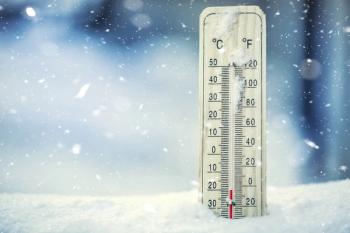
Ambient Temperature Linked to Stress Hormone Changes, Study Finds
Key Takeaways
- Higher ambient temperatures significantly amplify physiological stress reactivity, affecting the HPA axis and autonomic nervous system activity.
- Physiological stress markers increased at warmer temperatures without corresponding subjective stress report changes, indicating subconscious stress response influences.
Study finds slight temperature shifts are linked to changes in physiological stress responses.
Rising ambient temperatures aren’t just a comfort issue, they appear to influence how the body reacts to stress.1 A new study reveals a clear link between surrounding temperature and stress-system reactivity. The researchers measured physiological markers like cortisol and other stress hormones under varying room temperatures and found that higher heat may amplify reactivity in the hypothalamic-pituitary-adrenal (HPA) axis.
These findings published in
“We quantified HPA axis, ANS [autonomic nervous system], and subjective stress reactivity and examined their associations with variations in room temperature,” wrote the researchers of the study. “Importantly, room temperature variation was moderate (17°C–28°C), allowing for the assessment of variability in stress circuitry reactivity close to the thermoneutral zone, ie, without extreme heat.”
Climate change is not only a physical health crisis but also a growing mental health challenge.2 Rising temperatures, extreme weather events, and worsening air pollution increase stress, anxiety, and trauma for millions. Direct exposure to disasters such as hurricanes, wildfires, and floods can cause lasting psychological harm, including post-traumatic stress disorder, depression, and suicidal thoughts, whereas even indirect exposure contributes to widespread climate-related anxiety. Higher ambient temperatures are linked to more mental health–related emergency visits, increased aggression, and higher suicide rates.
The study enrolled 73 healthy adult participants who underwent the Trier Social Stress Test (TSST), a validated psychosocial stress challenge.1 Researchers systematically varied ambient room temperatures between 62.6°F and 82.4°F (17°C–28°C) to examine how moderate temperature changes influence stress reactivity. Physiological stress markers, including cortisol levels, alpha amylase activity, heart rate, and mean arterial pressure, were measured before and after stress exposure. Subjective stress levels were also assessed through participant self-reports. Data were analyzed to determine associations between ambient temperature and both physiological and subjective stress responses.
Moderate increases in ambient temperature significantly amplified physiological stress reactivity. Higher room temperatures (62.6°F–82.4°F) were associated with elevated cortisol concentrations (P = .008), indicating heightened HPA axis activity. In addition, markers of autonomic nervous system activity, including alpha amylase levels (P < .001), heart rate (P = .018), and mean arterial pressure (P = .017), also increased at warmer temperatures.
Moreover, these physiological changes occurred without corresponding increases in subjective stress reports, suggesting that temperature may influence stress responses below conscious awareness. These results point to a potential pathway through which even modest temperature rises could intensify stress-related health risks.
However, the researchers acknowledged some limitations. This study used existing data from a convenience sample, looking at natural changes in room temperature rather than controlling them directly. This made the results more realistic but also meant that the researchers could not establish that temperature caused the changes in stress responses. Additionally, the sample size and design limited the ability to look closely at factors like smoking or gender differences. For women, testing was done during a specific menstrual cycle phase, so results may not apply to other phases. Finally, normal body temperature regulation could partly explain the findings.
Despite these limitations, the researchers believe the study suggests that even moderate changes in room temperature can influence the body’s physiological response to stress, potentially affecting health in everyday environments.
“This observation has important methodical implications for stress researchers as laboratory temperature and its possible effects on stress reactivity should be taken into consideration in future studies,” wrote the researchers.
References
1. Fricke K, Barthel MC, Alexander N, et al. A few degrees, a lot more stress: associations between room temperature and reactivity to psychosocial stress. Compr Psychoneuroendocrinol. 2025;24:100319. doi:10.1016/j.cpnec.2025.100319
2. Hough E. How climate change affects our mental health, and what we can do about it. The Commonwealth Fund. March 29, 2023. Accessed October 2, 2025.
Newsletter
Stay ahead of policy, cost, and value—subscribe to AJMC for expert insights at the intersection of clinical care and health economics.







































